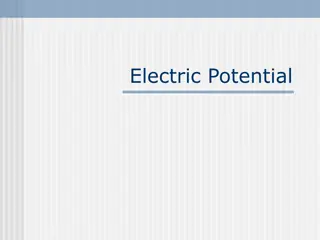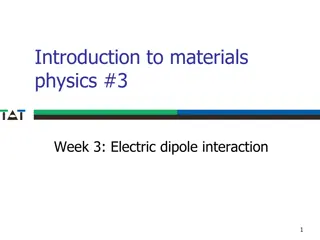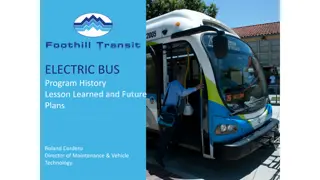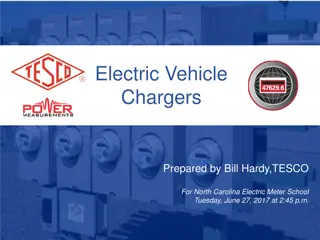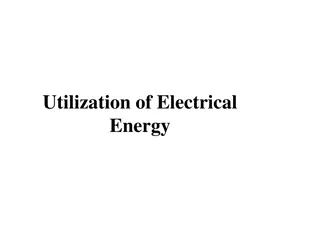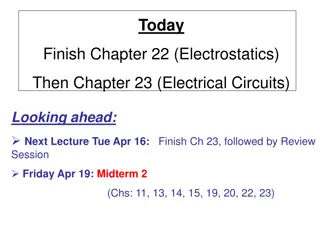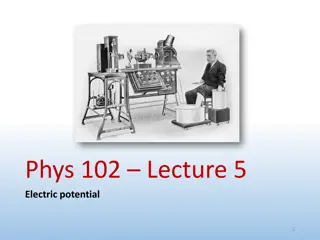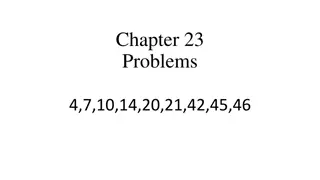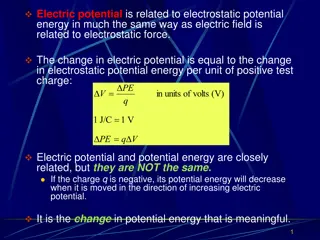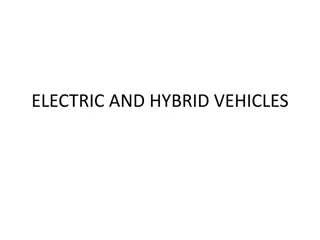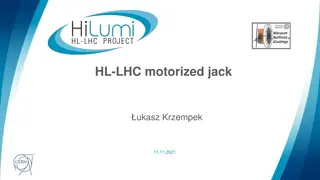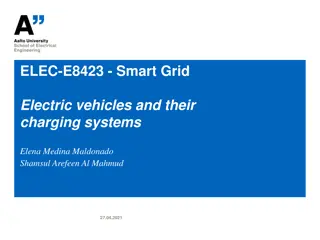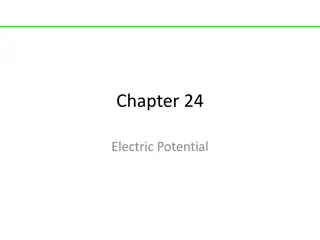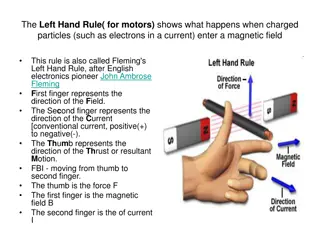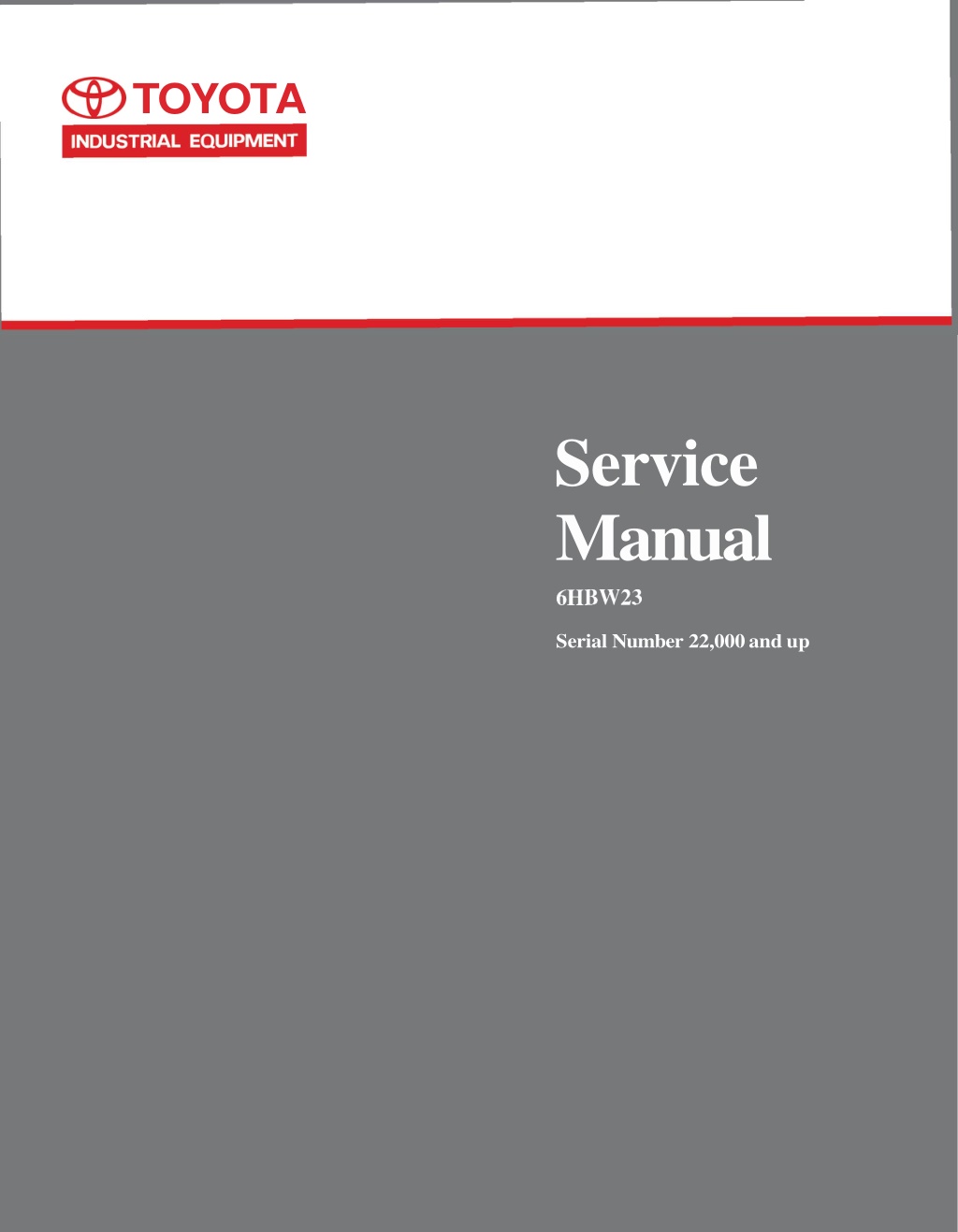
Toyota 6HBW23 Electric Walkie Pallet Jack Service Repair Manual Instant Download
Please open the website below to get the complete manualnn//
Download Presentation

Please find below an Image/Link to download the presentation.
The content on the website is provided AS IS for your information and personal use only. It may not be sold, licensed, or shared on other websites without obtaining consent from the author. Download presentation by click this link. If you encounter any issues during the download, it is possible that the publisher has removed the file from their server.
E N D
Presentation Transcript
@ TOYOTA Service Manual 6HBW23 Serial Number 22,000 and up
SERVICE MANUAL 4,500 lb. Powered Pallet Walkie Model: 6HBW23 Serial No. 22,000 and up 00700-CL340-2, Issued: 1 June 2004
Toyota Model 6HBW23 Service Manual Table of Contents Table of Contents How To Use This Manual . . . . . . . . . . . . . . . . . . . . . . . . . . . . . . . . . 1-1 Map of the Manual . . . . . . . . . . . . . . . . . . . . . . . . . . . . . . . . . . . . . . 1-2 Manual Design . . . . . . . . . . . . . . . . . . . . . . . . . . . . . . . . . . . . . . . . . 1-3 START Page . . . . . . . . . . . . . . . . . . . . . . . . . . . . . . . . . . . . . . . . . . . . 1-5 Safety . . . . . . . . . . . . . . . . . . . . . . . . . . . . . . . . . . . . . . . . . . . . . . . 2-1 Definitions . . . . . . . . . . . . . . . . . . . . . . . . . . . . . . . . . . . . . . . . . . . . . 2-2 General Safety . . . . . . . . . . . . . . . . . . . . . . . . . . . . . . . . . . . . . . . . . . 2-3 Battery Safety . . . . . . . . . . . . . . . . . . . . . . . . . . . . . . . . . . . . . . . . . . 2-6 Jacking Safety . . . . . . . . . . . . . . . . . . . . . . . . . . . . . . . . . . . . . . . . . . 2-9 Towing . . . . . . . . . . . . . . . . . . . . . . . . . . . . . . . . . . . . . . . . . . . . . . 2-10 Welding Safety . . . . . . . . . . . . . . . . . . . . . . . . . . . . . . . . . . . . . . . . . 2-11 Systems Overview. . . . . . . . . . . . . . . . . . . . . . . . . . . . . . . . . . . . . . 3-1 Truck Model Identification . . . . . . . . . . . . . . . . . . . . . . . . . . . . . . . . . 3-2 Vehicle Specifications . . . . . . . . . . . . . . . . . . . . . . . . . . . . . . . . . . . . 3-2 General Information . . . . . . . . . . . . . . . . . . . . . . . . . . . . . . . . . . . . . 3-3 Special Tools . . . . . . . . . . . . . . . . . . . . . . . . . . . . . . . . . . . . . . . . . . . 3-4 Theory of Operation . . . . . . . . . . . . . . . . . . . . . . . . . . . . . . . . . . . . . . 3-5 Planned Maintenance . . . . . . . . . . . . . . . . . . . . . . . . . . . . . . . . . . . 4-1 Maintenance Guidelines . . . . . . . . . . . . . . . . . . . . . . . . . . . . . . . . . . 4-2 Troubleshooting . . . . . . . . . . . . . . . . . . . . . . . . . . . . . . . . . . . . . . . 5-1 How to Use This Chapter . . . . . . . . . . . . . . . . . . . . . . . . . . . . . . . . . . 5-2 Electrical Troubleshooting Guidelines . . . . . . . . . . . . . . . . . . . . . . . . 5-3 Hydraulic Troubleshooting Guidelines . . . . . . . . . . . . . . . . . . . . . . . . 5-5 Definitions . . . . . . . . . . . . . . . . . . . . . . . . . . . . . . . . . . . . . . . . . . . . . 5-6 List of Electrical Symbols . . . . . . . . . . . . . . . . . . . . . . . . . . . . . . . . . . 5-9 Control Handle Display and Programming . . . . . . . . . . . . . . . . . . . . 5-10 Service Display . . . . . . . . . . . . . . . . . . . . . . . . . . . . . . . . . . . . . . . . 5-21 Power Amplifier Fault Codes . . . . . . . . . . . . . . . . . . . . . . . . . . . . . . 5-24 Programmable Maintenance Tool (PMT) . . . . . . . . . . . . . . . . . . . . . . 5-26 List of Troubleshooting Charts/Tables . . . . . . . . . . . . . . . . . . . . . . . 5-31 Troubleshooting Flowcharts . . . . . . . . . . . . . . . . . . . . . . . . . . . . . . . 5-33 Symptom Tables: Lift/Lower System . . . . . . . . . . . . . . . . . . . . . . . . 5-37 Symptom Tables: Travel (Forward/Reverse) System . . . . . . . . . . . . . 5-41 Component Procedures . . . . . . . . . . . . . . . . . . . . . . . . . . . . . . . . . . 6-1 Component Locator Photo . . . . . . . . . . . . . . . . . . . . . . . . . . . . . . . . . 6-3 Battery . . . . . . . . . . . . . . . . . . . . . . . . . . . . . . . . . . . . . . . . . . . . . . . 6-4 Tractor Covers . . . . . . . . . . . . . . . . . . . . . . . . . . . . . . . . . . . . . . . . . . 6-9 Power Cables . . . . . . . . . . . . . . . . . . . . . . . . . . . . . . . . . . . . . . . . . . 6-10 Wiring Harness . . . . . . . . . . . . . . . . . . . . . . . . . . . . . . . . . . . . . . . . 6-11 Fuses . . . . . . . . . . . . . . . . . . . . . . . . . . . . . . . . . . . . . . . . . . . . . . . 6-12 Circuit Breaker . . . . . . . . . . . . . . . . . . . . . . . . . . . . . . . . . . . . . . . . 6-13 Control Handle . . . . . . . . . . . . . . . . . . . . . . . . . . . . . . . . . . . . . . . . 6-14 Horn . . . . . . . . . . . . . . . . . . . . . . . . . . . . . . . . . . . . . . . . . . . . . . . . 6-18 Power Amplifier . . . . . . . . . . . . . . . . . . . . . . . . . . . . . . . . . . . . . . . . 6-19 Contactors . . . . . . . . . . . . . . . . . . . . . . . . . . . . . . . . . . . . . . . . . . . . 6-20 Master Control Relay . . . . . . . . . . . . . . . . . . . . . . . . . . . . . . . . . . . . 6-21 Switches (General) . . . . . . . . . . . . . . . . . . . . . . . . . . . . . . . . . . . . . . 6-23 Drive Unit . . . . . . . . . . . . . . . . . . . . . . . . . . . . . . . . . . . . . . . . . . . . 6-27 Electromagnetic Brake . . . . . . . . . . . . . . . . . . . . . . . . . . . . . . . . . . . 6-33 00700-CL340-2, Issued: 1 June 2004 iii
https://www.ebooklibonline.com Hello dear friend! Thank you very much for reading. Enter the link into your browser. The full manual is available for immediate download. https://www.ebooklibonline.com
Table of Contents Toyota Model 6HBW23 Service Manual Motors, General . . . . . . . . . . . . . . . . . . . . . . . . . . . . . . . . . . . . . . . 6-35 Drive Motor . . . . . . . . . . . . . . . . . . . . . . . . . . . . . . . . . . . . . . . . . . . 6-42 Pallet Forks and Load Wheels . . . . . . . . . . . . . . . . . . . . . . . . . . . . . 6-45 Hydraulic Components . . . . . . . . . . . . . . . . . . . . . . . . . . . . . . . . . . 6-47 Cold Storage Conditioning . . . . . . . . . . . . . . . . . . . . . . . . . . . . . . . . 6-55 Appendix . . . . . . . . . . . . . . . . . . . . . . . . . . . . . . . . . . . . . . . . . . . . . A-1 Lubrication Equivalency Chart . . . . . . . . . . . . . . . . . . . . . . . . . . . . . A-2 Torque Chart - Standard . . . . . . . . . . . . . . . . . . . . . . . . . . . . . . . . . . A-3 Torque Chart - Metric . . . . . . . . . . . . . . . . . . . . . . . . . . . . . . . . . . . . A-4 Decimal Equivalent Chart . . . . . . . . . . . . . . . . . . . . . . . . . . . . . . . . . A-5 Standard/Metric Conversions . . . . . . . . . . . . . . . . . . . . . . . . . . . . . . A-7 Schematics . . . . . . . . . . . . . . . . . . . . . . . . . . . . . . . . . . . . . . . . . . . A-9 Index . . . . . . . . . . . . . . . . . . . . . . . . . . . . . . . . . . . . . . . . . . . . . . . . I-1 iv 00700-CL340-2, Issued: 1 June 2004
Toyota Model 6HBW23 Service Manual Section 1. How To Use This Manual Manual Design Manual Design TS1: START TROUBLESHOOTING on page 5-33 will guide you to the individual troubleshooting symptom chart you need. When you are familiar with the symptoms listed, you may instead find the symptom chart from the List of Troubleshooting Charts/Tables on page 5-31. When you complete a troubleshooting procedure, make sure to follow the steps in the END1: End of Troubleshooting Procedure on page 5-35. Component Procedures gives step-by-step procedures for testing, removal, installation, and adjustment of individual truck components. Components are listed in an order that considers: Frequency of attention Physical attachment (example: brake must be removed before drive motor) Functional relation (for example: drive motor and drive unit components are grouped together) To find a component procedure, you may use one of three methods: Look up the component name. See Component Procedures on page 6-1. Find the component. See Component Locator Photo on page 6-3. Look up the component name in the Index. See Index on page I-1. Appendix contains reference information such as torque values, lubricants, and schematics. Index lists subjects alphabetically. The Toyota Model 6HBW23 Service Manual is designed with the following objectives in mind: Provide technical coverage for expected levels of user expertise Anticipate your needs and reduce your decisions regarding maintenance Reduce page flipping through a one-stop shopping approach The two-line running page header at the top of each page tells you the following: Name of the manual (Toyota Model 6HBW23 Service Manual) Current chapter title (example: this page How to Use This Manual) Current topic (example: this page Manual Design) We suggest you get in the habit of turning to the START page first when you use this manual. The START page asks a few simple questions to guide you to the correct chapter. How to Use This Manual explains the manual format and design and contains the START page. Safety explains warning and caution notes, general safety rules and safety rules for batteries, static, jacking, and welding. Systems Overview includes truck specifications and theory of operation information. Planned Maintenance outlines the recommended schedule of preventive services to keep your truck working most efficiently. Troubleshooting is a set of decision-tree charts and symptom tables designed to take you from a symptom to a specific sequence of tests in order to isolate a bad component. 00700-CL340-2, Issued: 1 June 2004 1-3
Toyota Model 6HBW23 Service Manual Section 2. Safety Section 2. Safety 00700-CL340-2, Issued: 1 June 2004 2-1
Section 2. Safety Toyota Model 6HBW23 Service Manual Definitions Definitions Throughout this manual, you will see two kinds of safety reminders: Warning means a potentially hazardous situation exists that, if not avoided, could result in death or serious injury. Caution means a potentially hazardous situation exists that, if not avoided, could result in minor or moderate injury or in damage to the truck or nearby objects. 2-2 00700-CL340-2, Issued: 1 June 2004
Toyota Model 6HBW23 Service Manual Section 2. Safety General Safety General Safety 1864 002.eps Do not operate or work on this truck unless you are trained, qualified, and authorized to do so and have read the Owner/Operator Manual. 1808 003.eps Operate this truck only from the operator s position. Know the truck s controls and what they do. 1808 004.eps Before working on this truck, always press the red OFF key (O) on the keypad and disconnect the truck s battery connector (unless this manual tells you otherwise). 1808 002.eps Do not operate this truck if it needs repair or if it is in any way unsafe. 1864 067.eps Do not wear watches, rings, or jewelry when working on this truck. 00700-CL340-2, Issued: 1 June 2004 2-3
Section 2. Safety Toyota Model 6HBW23 Service Manual General Safety schedmnt.eps spills.eps Follow the scheduled lubrication, maintenance, and inspection steps. Clean up any hydraulic fluid, oil, or grease that has leaked or spilled on the floor. 1808 005.eps Follow exactly the safety and repair instructions in this manual. Do not take shortcuts. Always park this truck indoors. 23L6S012.eps Do not park this truck in a cold storage area overnight. Do not use an open flame near the truck. Do not use gasoline or other flammable liquids for cleaning parts. Do not wash this truck with a hose. 2-4 00700-CL340-2, Issued: 1 June 2004
Toyota Model 6HBW23 Service Manual Section 2. Safety General Safety Do not add to or modify this truck until you contact your local Toyota Industrial Equipment Dealer to receive written manufacturer approval. 00700-CL340-2, Issued: 1 June 2004 2-5
Section 2. Safety Toyota Model 6HBW23 Service Manual Battery Safety Battery Safety As a battery is being charged, an explosive gas mixture forms within and around each cell. If the area is not properly ventilated, this explosive gas can remain in or around the battery for several hours after charging. Make sure there are no open flames or sparks in the charging area. An open flame or spark can ignite this gas, resulting in serious damage or injury. 04G6S059.eps Make sure a shower and eyewash station are nearby in case there is an accident. Battery electrolyte is a solution of sulfuric acid and water. Battery acid causes burns. If any electrolyte comes in contact with your clothing or skin, flush the area immediately with cold water. If the solution gets on your face or in your eyes, flush the area with cold water and get medical help immediately. 23L6S012.eps A battery gives off explosive gases. Never smoke, use an open flame, or use anything that gives off sparks near a battery. 04G6S058.eps 25L6SO16.eps Keep the charging area well-ventilated to avoid hydrogen gas concentration. Wear personal protective equipment to protect eyes, face, and skin when checking, handling, or filling batteries. This equipment includes goggles or face shield, rubber gloves (with or without arm shields), and a rubber apron. 2-6 00700-CL340-2, Issued: 1 June 2004
Toyota Model 6HBW23 Service Manual Section 2. Safety Battery Safety Press the red OFF key (O) on the keypad before disconnecting the battery from the truck at the battery connector. Do not break live circuits at the battery terminals. A spark often occurs at the point where a live circuit is broken. 27Y7S013.tif Keep plugs, terminals, cables, and receptacles in good condition to avoid shorts and sparks. Vent Hole 04G6S057.eps Do not lay tools or metal objects on top of the battery. A short circuit or explosion could result. 09G6S047.tif Keep filler plugs firmly in position at all times except when the electrolyte level is checked, when water is added to the cells, or when the specific gravity is checked. Make sure the vent holes in the filler plugs are open to permit the gas to escape from the cells. Keep batteries clean. Corrosion causes shorts to the frame and possibly sparks. 00700-CL340-2, Issued: 1 June 2004 2-7
Section 2. Safety Toyota Model 6HBW23 Service Manual Battery Safety 25L6S014.eps Follow the charging procedures in the Battery Instruction Manual and in the Battery Charger Instruction Manual. Do not permit cleaning solution, dirt, or any foreign matter to enter the cells. Make sure you install the correct size battery. A smaller or lighter weight battery could seriously affect truck stability. See the truck s specification plate for more information. 1808 006.eps Never plug a battery charger into the truck s battery connector. Plug the battery charger only into the battery connector from the battery. 2-8 00700-CL340-2, Issued: 1 June 2004
Toyota Model 6HBW23 Service Manual Section 2. Safety Jacking Safety Jacking Safety NOTE: After working on a vehicle, test all controls and functions to assure correct operation. When it is necessary to jack the truck off the floor to perform maintenance procedures, observe the following safety precautions: 1. Lower the forks completely. Remove any load. 2. Position all controls in neutral. 3. Block the wheels to prevent movement of the vehicle. 4. Press the red OFF key (O) on the keypad and disconnect the battery connector. 5. Position the jack under the designated jacking points. Use extreme care when the truck is jacked up. Keep hands and feet clear from vehicle while jacking the truck. After the truck is jacked, position solid blocks beneath it to support it. DO NOT rely on the jack alone to support the truck. Fork Section 1. Using the lift button, raise the forks to maximum height. 2. Block the fork section. The tractor section will remain on the floor. 3. Lower the forks on the blocks. 4. Press the red OFF key (O) on the keypad and disconnect the battery connector. Tractor Section 1. Position the jack in the designated jacking position. 2. Jack one side of the truck so that the drive tire is off the floor no more than 1 in. (25.4 mm). 3. Block that side of the truck in place. 4. Jack the other side of the truck level with the first side. 5. Block that side of the truck in place. 00700-CL340-2, Issued: 1 June 2004 2-9
Section 2. Safety Toyota Model 6HBW23 Service Manual Towing Towing To safely tow this truck: 1. Lower the forks and remove any load. 2. Press the red OFF key (O) on the keypad and disconnect the battery connector. 3. Using a suitable towing vehicle, lift the tractor end of the truck until the drive tire is no more than 1 in. (25.4 mm) off the floor. 4. Tow the truck slowly in the tractor-first direction. NOTE: If a suitable towing vehicle is not available, the electromagnetic brake must be disabled to move this truck. See Mechanically Releasing the Brake on page 6-34. 2-10 00700-CL340-2, Issued: 1 June 2004
Toyota Model 6HBW23 Service Manual Section 2. Safety Welding Safety Welding Safety Flame cutting or welding on painted surfaces may produce potentially harmful fumes, smoke and vapors. Prior to performing flame cutting or welding operations, it is recommended that the coating be removed in the vicinity where the operation(s) will be performed. 1808 004.EPS Disconnect the battery before you attempt to inspect, service, or repair the lift truck. Discharge residual charge in the power amplifier by connecting a load across the power amplifiers B+ and B (such as a contactor coil or by pressing the horn button). Do a test for shorts to frame. See Checking for Shorts from Components to Truck Frame on page 5-3. If any shorts are detected, remove them before you proceed with the welding operation. Clean the area to be welded. Protect all truck components from heat, weld spatter, and debris. Attach the ground cable as close to the weld area as possible. Do not perform any welding operations near the electrical components. If welding must be done near the battery compartment, remove the battery from the truck. When you are finished welding, perform all ground tests and electrical inspections before the vehicle is operated. Coating removal may be by mechanical methods, chemical methods or a combination of methods. Flame cutting and/or welding operations must be carried out only in well ventilated areas using local exhaust if necessary. 04GSO59.eps Before working on this truck, make sure that: Fire protection equipment is nearby. You know where the nearest eyewash station is located. 00700-CL340-2, Issued: 1 June 2004 2-11
Toyota Model 6HBW23 Service Manual Section 3. Systems Overview Section 3. Systems Overview 00700-CL340-2, Issued: 1 June 2004 3-1
Section 3. Systems Overview Toyota Model 6HBW23 Service Manual Truck Model Identification Truck Model Identification 1581 001.tif Figure 3-1. Model 6HBW23 Pallet Truck Vehicle Specifications The total weight of the load must include the pallet and the container or the device holding the load. Category Maximum Load Capacity 4,500 lb. (2,041 kg) Upright Height 50.8 in. (129.1 cm) Overall Length (Handle Raised) up to 81.8 in. (207.8 cm) Overall Width 28.0 in. (711 mm) Maximum Lift Height 8.65 in. (219.7 mm) Regular Speed, Maximum 3.9 mph (6.3 kph) Stopping Distance 6 ft. (1.83 m) Battery Compartment Width 7.8 or 9.0 in. (198 or 228 mm) Battery Voltage 24V Minimum Battery Weight 200 lb. (91 kg) Maximum Battery Weight 660 lb. (299 kg) Truck Weight Without Battery 800 lb. (362 kg) Wheel: Drive 10 x 5 in. Rubber Wheel: Load 3.25 x 5 in. Polyurethane (2) 3-2 00700-CL340-2, Issued: 1 June 2004
Toyota Model 6HBW23 Service Manual Section 3. Systems Overview General Information General Information Control Handle Page 6-14 Battery Page 6-4 Drive Unit Page 6-27 Pallet Forks and Load Wheels Page 6-45 Figure 3-2. Model 6HBW23 General Information 00700-CL340-2, Issued: 1 June 2004 3-3
Suggest: For more complete manuals. Please go to the home page. https://www.ebooklibonline.com If the above button click is invalid. Please download this document first, and then click the above link to download the complete manual. Thank you so much for reading
Section 3. Systems Overview Toyota Model 6HBW23 Service Manual Special Tools Special Tools Programmable Maintenance Tool Service Key 27y7s021.tif Figure 3-4. Service Key Figure 3-3. Programmable Maintenance Tool Use the optional Service Key (P/N 00590-42683-71) directly on the truck to troubleshoot and program the truck service parameter settings. See Parameters (P) on page 5-16. The optional Programmable Maintenance Tool (PMT) (P/N 00590-49981-71) permits you to test and diagnose the power amplifier in the truck. See Figure 3-3. The PMT is powered by the host power amplifier through the four-pin connector installed at the bottom of the power amplifier. 3-4 00700-CL340-2, Issued: 1 June 2004
Toyota Model 6HBW23 Service Manual Section 3. Systems Overview Theory of Operation Theory of Operation Truck Starting hydraulic pressure in the lift cylinder raises the forks. lift limit switch (S36) transmits a lift limit signal to the power amplifier which removes power to the lift motor when the forks reach a preset lift limit. To start the truck, the battery is plugged in, the Master Control ON/OFF switch is in the ON position, the PIN-key code is entered in the keypad, and the green ON (|) key pressed (or optional key switch is ON). See Service Display on page 5-21. When the lift button is released: the pump contactor coil (K30) is de-energized. This stops the lift motor and pump. The forks are held in position by hydraulic fluid trapped in the cylinder by the check valve, the static position of the relief valve, and the closed lowering solenoid valve (Y10). the relief valve opens if the hydraulic pressure exceeds the preset limit. Lift/Lower The lift/lower system consists of an electrically operated hydraulic pump assembly and related components. The hydraulic pump assembly consists of a positive displacement rotary gear pump with reservoir mounted to an adapter. A DC electric motor is mounted to the opposite side of the pump adapter. An adjustable relief valve, check valve, and a solenoid operated lowering valve are installed within the adapter. Lower When the battery is connected, the truck is ON, and the lower button is pressed: lower signal is detected via hall effect sensors, converted into the lower instruction, and transmitted via the CAN to the power amplifier. lowering solenoid valve (Y10) opens. hydraulic fluid in the lift cylinder returns to the hydraulic reservoir through the lowering valve and the flow control valve. The lowering speed is regulated by the flow control valve. the forks lower. With the forks elevated, the normally closed solenoid valve and the check valve prevent hydraulic fluid from returning to the reservoir. Lift When the battery is connected, the truck is ON, and the lift button pressed: a lift signal is detected via hall effect sensors, converted into the lift instruction, and transmitted via the Controller Area network (CAN) to the power amplifier. the lift pump contactor (K30) closes, applying B+ to the lift pump motor (M3) causing the lift pump to operate. hydraulic fluid is drawn into the lift pump. as the pump rotates, oil is forced out the pressure port through the lift hose to the lift cylinder. Oil cannot return to the reservoir because of the closed pressure relief valve and closed lowering solenoid valve. Direction/Speed Control The following descriptions assume the battery is charged and connected, the truck is ON, and main contactor (K10) is energized. Control Handle Positioning When the control handle is in the upright position, the parking brake is engaged. When the control handle is within 6 to 46 of the upright position, the brake is allowed to 00700-CL340-2, Issued: 1 June 2004 3-5
https://www.ebooklibonline.com Hello dear friend! Thank you very much for reading. Enter the link into your browser. The full manual is available for immediate download. https://www.ebooklibonline.com





